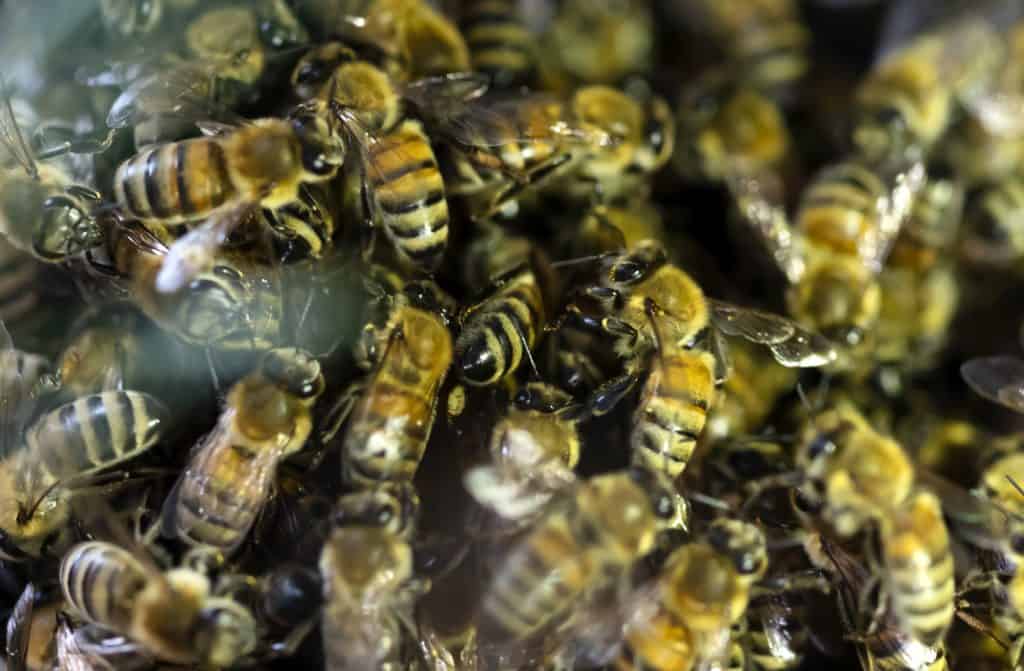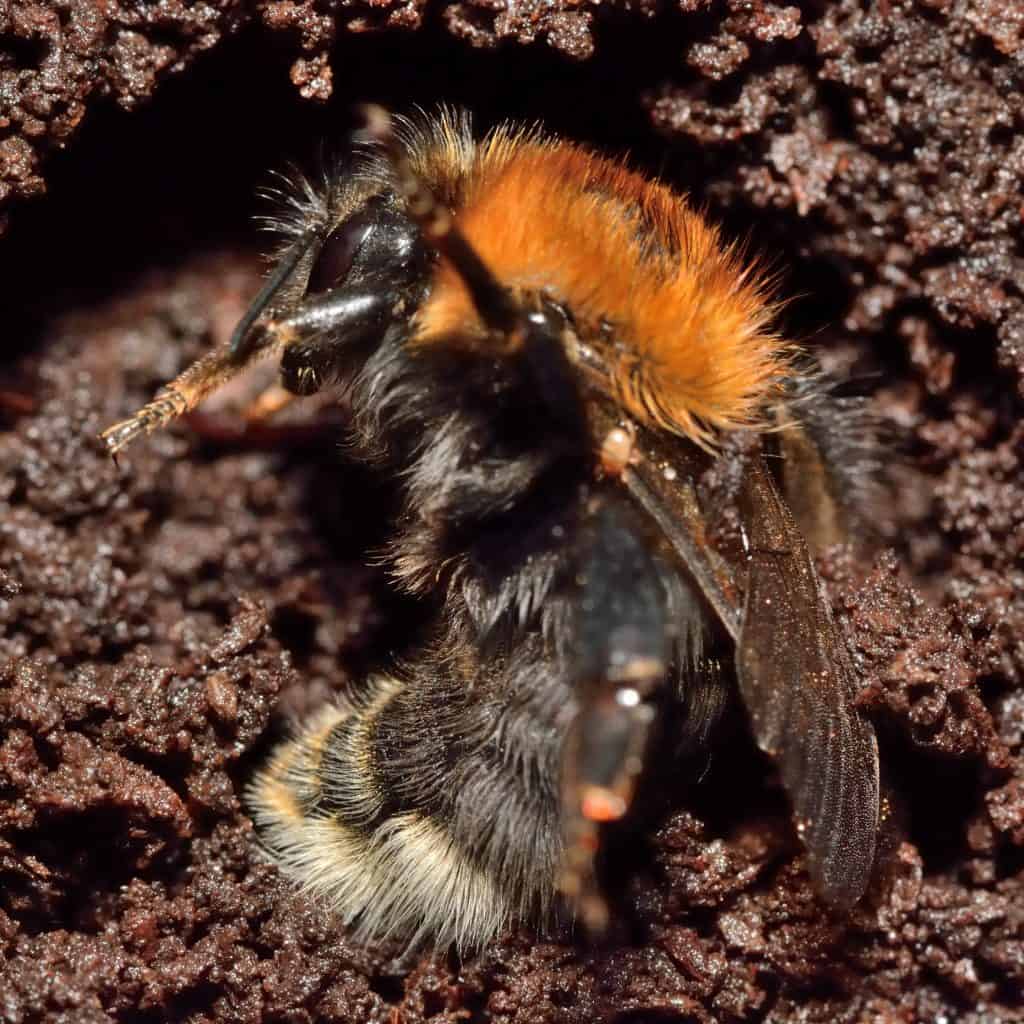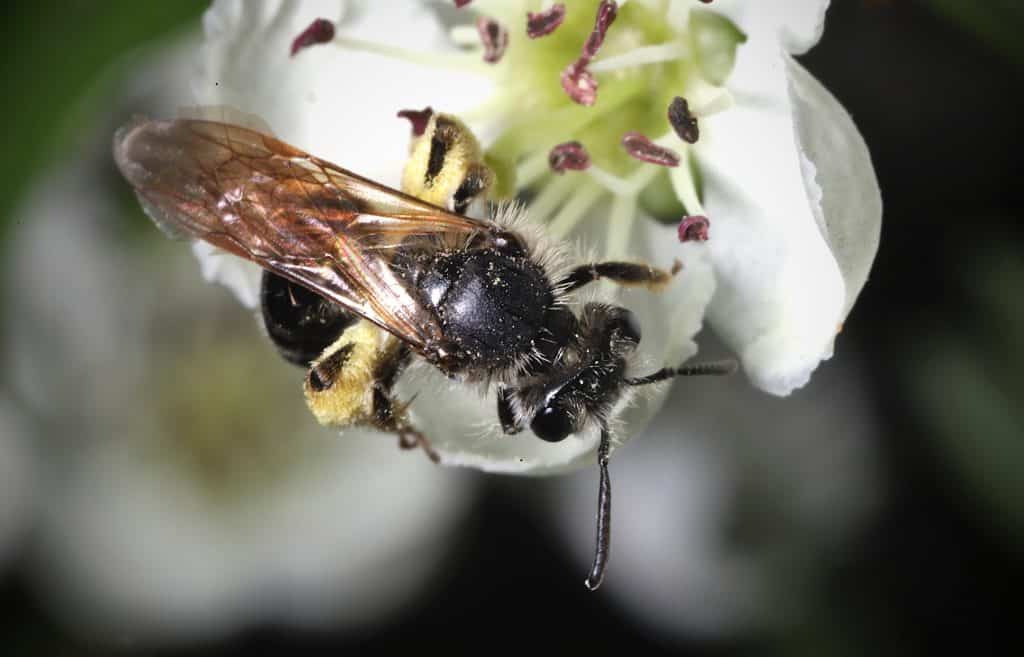Whether you are a beekeeper curious about your honey bees’ behavior in the winter, or you are more generally interested in what different kinds of bees do in the winter, this article is for you!
Depending on what type of bee we are discussing, the bees may overwinter in their hive, hibernate, migrate, or even die before winter and leave their offspring to overwinter in their nests. Bees have many different ways of surviving winter as individuals, colonies, and species.
What Do Honey Bees Do in the Winter?
Honey bees do their best to survive winter by keeping themselves warm within their hives. While some honey bee colonies do die during the winter, the majority survive winter by clustering together to keep warm and feeding on their honey stores.
Do Honey Bees Die During the Winter?

Unfortunately, some honey bee colonies do die during the winter. In 2021, about 32.2% of beekeepers’ colonies were lost during the winter months. These losses can be due to a small population, not enough stores of honey made during the summer, and diseases or parasites.
If a bee colony has a small population, they will struggle to keep themselves warm enough to survive winter, as the bees use their collective body heat to stay warm. If the bees do not store enough honey over the summer, or if beekeepers harvest too much honey from their bees, the bees will starve during the winter. Finally, parasites such as Varroa mites can cause a colony to die off in the winter if there are high mite populations immediately before winter begins.
Do Honey Bees Hibernate During the Winter?
Hibernation is a phenomenon where an animal’s metabolism slows down drastically to conserve energy. It most often occurs in cold temperatures, when the animal cannot find food or it is too cold for them to function normally. Heart rate and breathing will slow down dramatically so that the animal can survive such cold temperatures.
Honey bees do not hibernate during the winter. Instead, they form a small cluster within their hive, staying close together to maximize their body temperatures. The bees vibrate their muscles to create heat, effectively shivering. The queen stays in the middle of the cluster where temperatures can reach as high as 100 degrees Fahrenheit. The outside of the winter cluster is typically very tightly packed, while the inside is more loose and the bees can easily move around within the cluster.
What Do Honey Bees Eat During the Winter?
Honey bees spend their whole summers making honey so that they will have something to eat during the winter. The bees store honey in special hexagonal cells made out of beeswax, which the bees secrete from their bodies. Once a cell is filled with honey, it is capped with more beeswax to make a solid cell where the honey will not go bad and can be fed on all winter long.
What Do Bumblebees Do in the Winter?

Bumblebees are fairly different from honey bees in their overwintering practices. While queen bumblebees hibernate during the winter and survive until the next spring, all of the other bumblebees in a colony die as the temperatures get colder. Because queen bumblebees hibernate through winter, they do not need to eat during winter as honey bees do.
Do Bumblebees Die During the Winter?
Most bumblebees do die before the winter comes around. While honey bees overwinter as a colony, bumblebee colonies are restarted every spring when temperatures increase. The only bumblebees that survive winter are the queen bumblebees, who hibernate to conserve energy.
While it may seem drastic that all of the other worker and drone bumblebees die before winter comes, this system has worked for bumblebees so far. When the new queens are born at the end of the fall, they find holes in which to hibernate, and survive by hibernating all winter long. Then, in the spring, they emerge from hibernation and begin to forage and lay new eggs to create new colonies of bumblebee.
Do Bumblebees Hibernate During the Winter?
Only bumblebee queens hibernate during the winter. They slow down their heart rate and breathing as the cold weather comes on, and this allows them to survive without eating or drinking anything. This is because their metabolism also slows down, meaning that they digest food much slower.
What Do Bumblebees Eat During the Winter?
Because most bumblebees die before winter, they do not need to eat anything during the winter. And because queen bumblebees hibernate during winter to conserve energy, they also do not need to eat during the winter. So bumblebees typically do not eat at all during the colder months of the year.
What Do Solitary Bees Do in the Winter?

There are a large number of solitary bees in the world, whose lifecycles and overwintering habits vary. However, there are some common features of solitary bees during the winter.
Do Solitary Bees Die During the Winter?
Most adult solitary bees do die during the winter, leaving behind larvae or pupae which will survive the winter in their nests. Adult solitary bees typically lay eggs in their nests and feed them all summer long before dying as the winter months approach. Adult solitary bees typically never see their young full-grown, as they die before the young bees emerge in the spring.
Do Solitary Bees Hibernate During the Winter?
Solitary bees overwinter in their nest cells either as larvae, pupae, or adult bees. Because most do not eat during the winter and survive simply in their larval or pupal forms, they do, in a sense, hibernate. Some solitary bees overwinter in cocoons that help insulate their bodies from the cold, while some tough it out without cocoons.
What Do Solitary Bees Eat During the Winter?
Most solitary bees do not eat at all during the winter. Some solitary bees are laid as eggs on balls of pollen which they can feed on as they develop, and sometimes these bees do eat this pollen during the winter months. Further, some species of solitary bees or wasps are laid on or inside of other paralyzed insects, and they can feed on these insects as they develop.
What Type of Bees Migrate?
Migration is a practice of animals in which they move between different habitats in order to avoid certain climates and be near certain food sources. For example, many birds migrate to the South in the winter in order to avoid harsh Northern winters.
The giant honeybee, or Apis dorsata, migrates between nesting sites as seasons change. This bee is common in southern Asia, where it is an important pollinator and source of wild honey. This species migrates to take advantage of flowers that bloom at different times of year and different elevations so that they can create honey and feed on nectar to survive.

